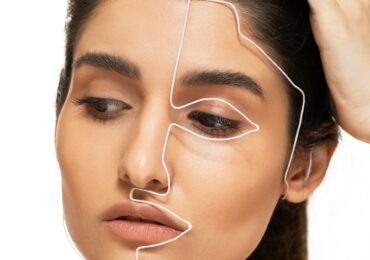Rhinoplasty is one of the most common cosmetic procedures. Also known as nose reshaping or a nose job, the healing stage of the procedure is crucial in optimising your results. For many people, a rhinoplasty presents an opportunity to alter the shape and size of the nose and correct deformities. Like with every other cosmetic procedure, you will need some downtime to recover. You must know what the rhinoplasty recovery timeline entails before you have the procedure.
What to Expect After Rhinoplasty
Rhinoplasty can help narrow a wider nose, reduce the size of a large nose, and reposition the nose after an injury. A nose job also helps reshape the nasal tip and correct any breathing problems. One of the most important things is to make sure you have realistic expectations before your procedure. Most patients report that the pain is minimal but, your doctor will recommend pain medications anyway.
While the pain can cause discomfort, it is the congestion that most people complain of. After the procedure, your nose may feel “plugged up” for a couple of days. During this time, breathing and smelling will not feel the same. You may also feel a little pressure in the ears. This discomfort gets better with time as you continue healing.
In the first few days, your doctor will recommend that you sleep with your head elevated. You can use two to three pillows during that time. Sleeping in this position helps with breathing and minimises swelling. It also ensures that blood and fluid from the tissues leak out.
How Long Does it Take to Recover from a Nose Job?
For most patients, rhinoplasty recovery takes about 6 weeks. There are activities that you should avoid for part or all of your recovery. Technically, the full healing process can take up to 1 year. Although that sounds like a long time, it’s mainly the first 6 weeks where you have to adjust your life the most. At 6 weeks, your bones should be stable, and you can start wearing glasses and lifting weights. The healing process as a whole can take up to 1 year for the swelling to subside and several months for normal nose sensations to return.
As long as you follow all your surgeon’s post-surgical instructions, you can minimise your rhinoplasty recovery time. Here is how rhinoplasty recovery, day by day, will look like from the first week of your recovery.

Week 1
After a nose job, the surgeon will place a splint to keep the nose in place. The splint is removed after a week. During this time, you can see the results of the procedure. If there was a bump, it will be gone, the top will be more refined, and the entire profile of the nose will have improved. There will also be visible minor bruising around your eyes, but you should be able to return to normal activities. However, avoid sun exposure, heavy lifting and putting any pressure on the face.
Week 2
Swelling and bruising will have subsided by the second week, and your nose will be looking much better. Unless the nose job involved a major reconstruction, you won’t need to see a doctor for a routine check-up for several more weeks.
Week 3 to 4
After three to four weeks, you should see more improvement. If you exercise, this is a good time to resume cardio exercises.
Week 6
At this point, there is very little evidence that you’ve had a nose job. You are free to resume strength training and resistance workouts at this time because the nasal bones will have stabilised. Make sure, however, that you check with your doctor before you resume any strenuous physical activities.
3 to 6 months
After three to six months, the abnormal skin sensations and numbness around the nose should have completely disappeared.
One year
At this stage, the healing process will be complete, give or take a couple of more weeks or months. After a year, you shouldn’t be experiencing any discomfort or pain. There also shouldn’t be any redness or bruising around the nose. If you are in pain or notice any bruising and redness, inform your plastic surgeon immediately.
6 Rhinoplasty Recovery Tips
With a nose job, patients go home the same day. The main side effects will likely be bruising, swelling, and moderate pain. You also may feel a little off from the anaesthesia, so stay hydrated as you begin to flush it out of your system.
1. Keep Your Head Elevated
If you sleep on your side during rhinoplasty recovery, it can cause additional bruising and swelling. Also, it could affect your results if you were to bump or displace your nose. Instead, sleep on your back and keep your head elevated for 6 weeks. You could sleep in a recliner or use a few pillows to prop up your head.
2. Avoid Exercise
While you can get up and walk about after your procedure, to get the blood flowing, you must avoid exercise after your surgery. The main reason for this is that you don’t want to do anything that could accidentally knock your nose. Typically, it takes most patients about 6 weeks for their nose to be stable. Your doctor will let you know when you can exercise after your surgery.
3. Don’t Wear Glasses or Blow Your Nose
During your recovery, you want to avoid doing anything that touches your nose. The two biggest things for this are wearing glasses and blowing your nose. If you have to, wear contacts or invest in a pair of bridgeless glasses. It can be tempting to blow your nose, especially after the surgery, but you need to avoid doing this as it could affect your results.
4. Listen to Your Doctor
Your doctor’s instructions are there for a reason. You can do as much internet research as you can, but that doesn’t replace your doctor’s instructions. If you have any concerns during your recovery, contact your doctor immediately. You will have instructions for both before and after your procedure to follow.
5. Manage the Dry Throat
For the first few days, you will have to breathe through your mouth which will leave your throat very dry. To maximise healing, find ways of managing the dry throat. For instance, you can have a humidifier running by your bed while you are resting. Drinking honey tea and taking throat lozenges can also help.
6. Be Patient
As the swelling can take up to 1 year to fully subside, patience is key in your nose job recovery. The healing process takes time, so you must know what to expect before your procedure. This is, so you have a realistic expectation of both your results and the time it takes to get those results.
A nose job requires you to take time off work to recover. Rhinoplasty recovery time is much shorter than if you had a major procedure like a tummy tuck. Knowing what to expect as you recover will go a long way in helping you manage your expectations and maximise healing. If you are thinking about having a rhinoplasty procedure, schedule a consultation today at our Harley Street nose clinic.













